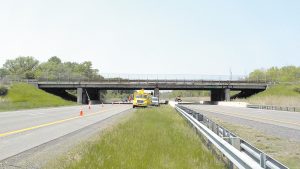In President Joe Biden’s late April visit to Syracuse to announce federal funding for Micron Technology’s planned semiconductor manufacturing facility in Clay, north of Syracuse, the focus was on the amount of that investment. That’s understandable, since it’s a very big number — up to $6.14 billion (which includes a Micron project in Idaho as […]
Already an Subcriber? Log in
Get Instant Access to This Article
Become a Central New York Business Journal subscriber and get immediate access to all of our subscriber-only content and much more.
- Critical Central New York business news and analysis updated daily.
- Immediate access to all subscriber-only content on our website.
- Get a year's worth of the Print Edition of The Central New York Business Journal.
- Special Feature Publications such as the Book of Lists and Revitalize Greater Binghamton, Mohawk Valley, and Syracuse Magazines
[bypass-paywall-buynow-link link_text="Click here to purchase a paywall bypass link for this article"].
In President Joe Biden’s late April visit to Syracuse to announce federal funding for Micron Technology’s planned semiconductor manufacturing facility in Clay, north of Syracuse, the focus was on the amount of that investment.
That’s understandable, since it’s a very big number — up to $6.14 billion (which includes a Micron project in Idaho as well) — that will undoubtedly transform the Onondaga County economy for generations to come.
But as someone charged with attracting businesses to Broome County, something else stood out to me — the repetition by multiple speakers of two words that are critical to the ability of other upstate communities to replicate Central New York’s success: Shovel ready.
Both Gov. Kathy Hochul and Senate Majority Leader Chuck Schumer gave high marks to Onondaga County Executive Ryan McMahon for the compilation of parcels that created the White Pine Commerce Park in Clay, and the subsequent marketing of the site as a development destination.
Sen. Schumer said when he was trying to woo companies to locate Upstate, they asked about a shovel-ready site. “A lot of places didn’t (have that),” he recalled. “Syracuse did.”
It’s our job as economic-development professionals to anticipate the needs of companies in a variety of industries, including the space and amenities they require. Our competition in luring job-creating projects to our county (Broome) is not only other states, but other nations. And make no mistake about it, that competition is stiff.
While some companies can retrofit to meet their needs the many existing vacant industrial and office sites that dot the upstate landscape, prized undeveloped land with easy access to transportation, sewer and water systems, and the power grid, continue to drive some of the most consequential significant developments.
That certainly was the case not only with Micron, but also Edwards Vacuum in Western New York, and Wolfspeed in the Mohawk Valley.
As we’ve watched our neighbors land one generation-defining deal after another, we’ve been left with a simple question: Why not us?
The answer is that we need to get into the game and give companies what they want. But we currently lack the next shovel-ready site that leaders in growth industries like high-tech manufacturing, life sciences, agricultural processing, and related supply chains are all seeking.
We are working to change that.
The Broome County Industrial Development Agency was recently granted authority by the state to lead an environmental review of a proposed 526-acre Broome Technology Park greenfield development (the project is located along Airport Road in the towns of Maine and Union). This has incredible potential to maximize our ability to score good-paying, long-term jobs for area residents and help restore the Southern Tier as a leader in technological advancement and business growth.
We know that a thorough review and a collaborative process are essential to ensuring that we attract the kind of companies that are a good fit for our community and have the potential to make an impact far beyond our borders. Being truly shovel ready means reducing as many barriers as possible to development — whether it’s site zoning, availability of utilities, environmental mitigations, or community buy-in. And getting there takes time.
This effort can’t succeed without local engagement. We’re about to embark on a collaborative process with the end goal of developing a shared outline for both the site and the right businesses to attract. It is our job to help people understand the benefits that come from greenfield development, and how a site can strike a balance between business needs and residents’ vision for their community.
To be clear: no economic-development plan is cast in stone at this stage. We intend to listen to residents — both their development ideas and their concerns — to plan a site that best drives the region forward.
After all, Micron certainly did not arrive in Onondaga County in a vacuum. People from across Central New York continue to raise concerns about aspects of that project and present their ideas for how the development should occur. That kind of engagement should be welcome, not discouraged. We need to put all cards on the table and develop understanding from all sides of how the project can make the greatest positive impact on the region, the state, and the nation.
That’s what we plan to do as we embark on a robust review process for the Broome Technology Park site.
As Sen. Schumer said, it was the detailed local-level work that ensured “a plot of land in Clay, New York, could grow into a field of dreams for new investment.”
We’re excited to take the next steps toward preparing the Southern Tier’s own field of dreams.
Stacey Duncan is the executive director of The Agency, and president and CEO of the Greater Binghamton Chamber of Commerce, which form the Leadership Alliance.
Stacey Duncan is the executive director of The Agency, and president and CEO of the Greater Binghamton Chamber of Commerce, which form the Leadership Alliance.



